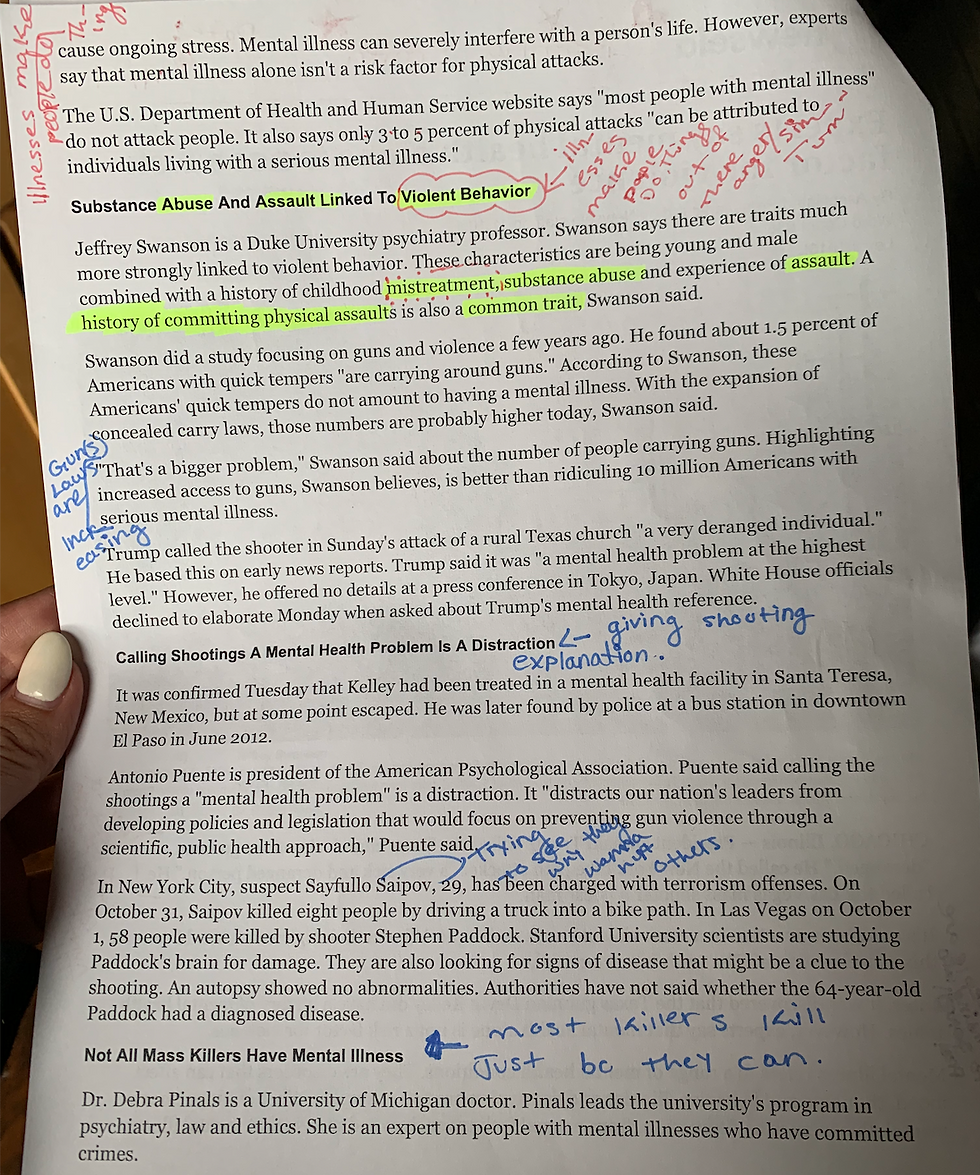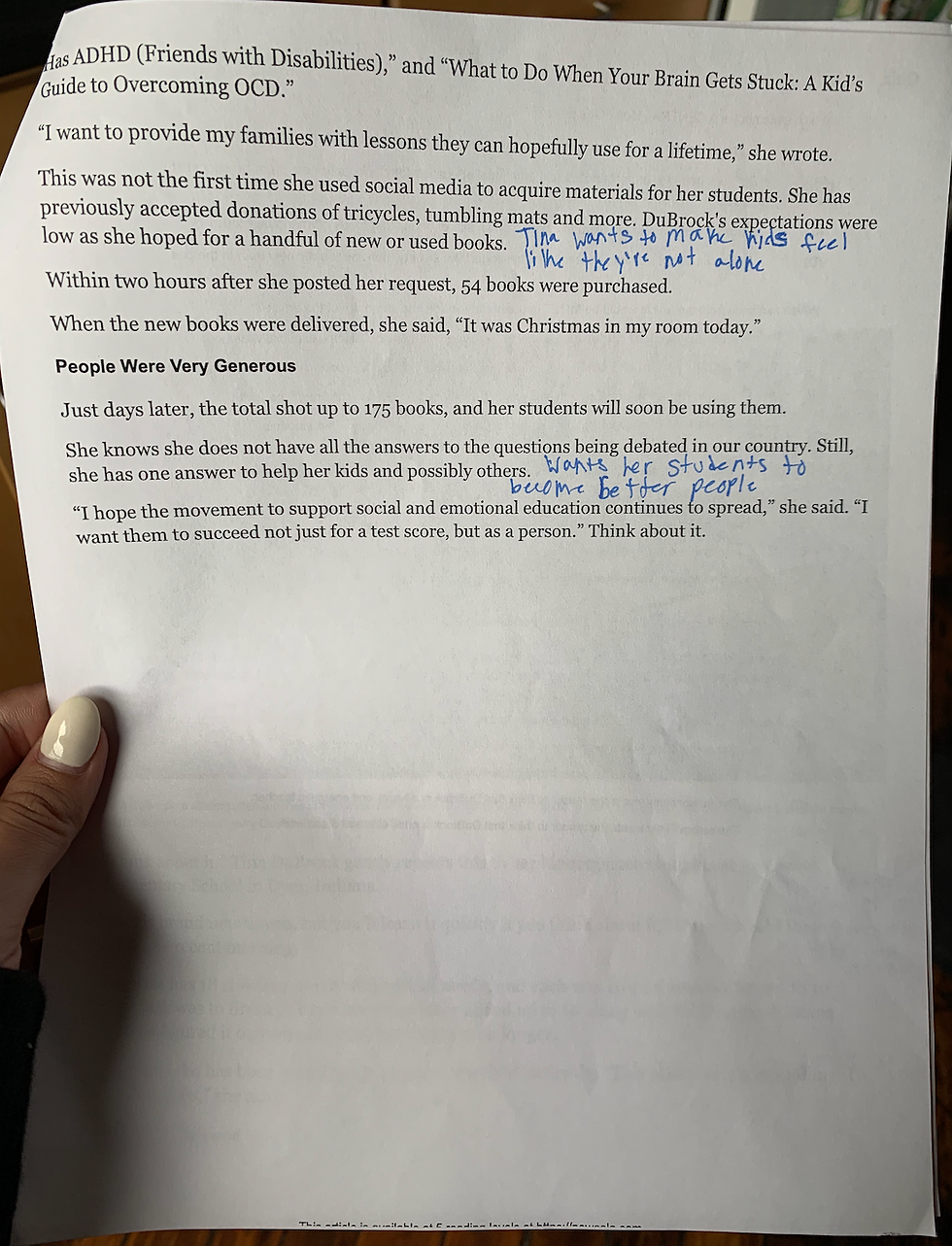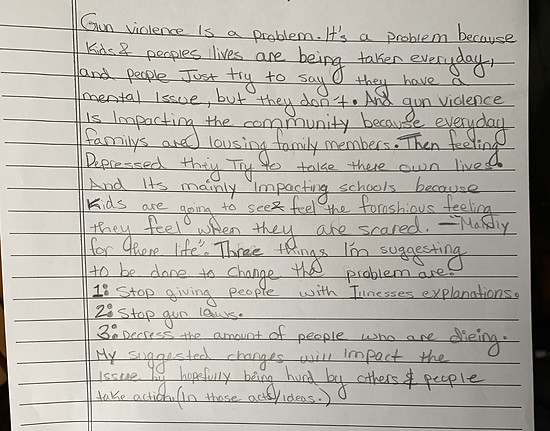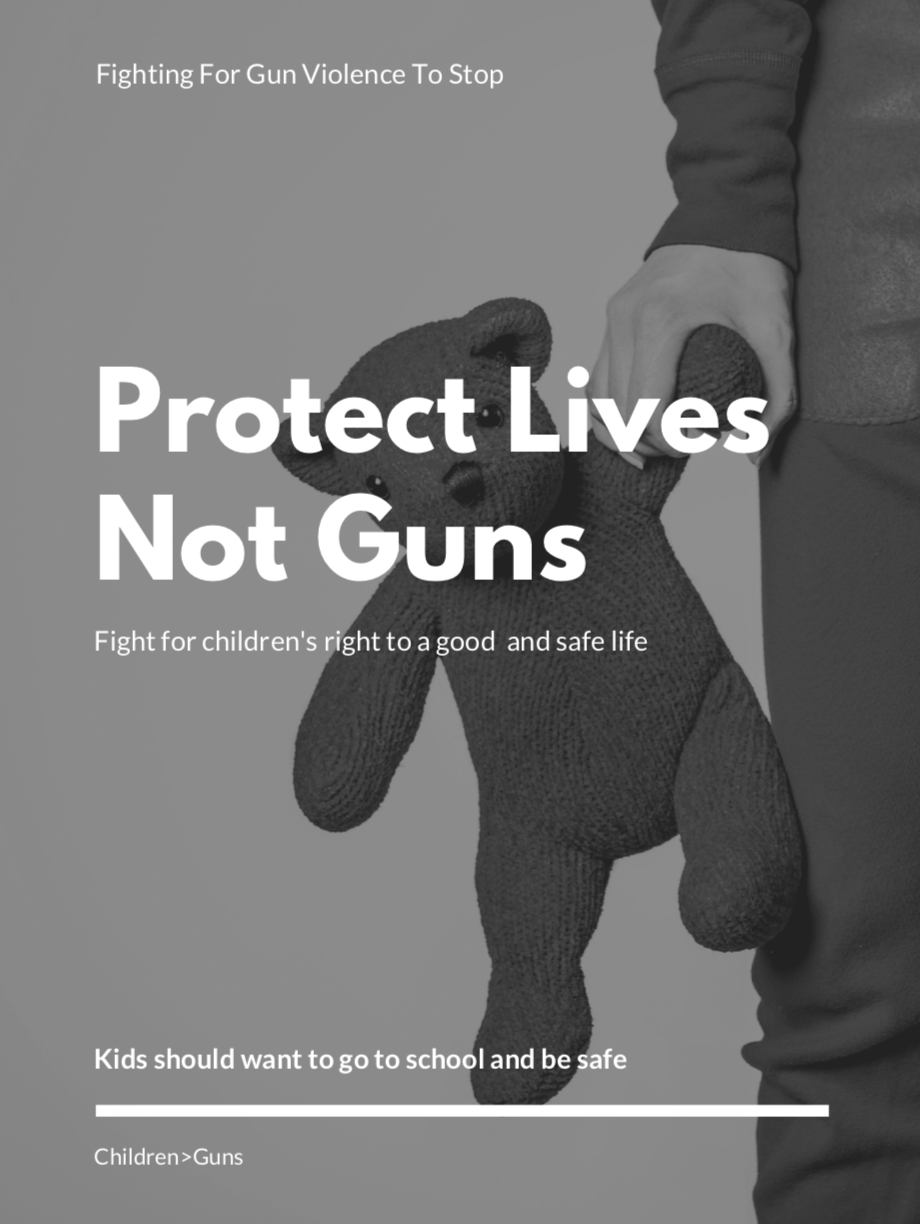March for Our Lives
Introduction
Advocacy was a relevant topic this year and when directly asking students what they wanted to change there was a trend around the topic of violence; particularly gun violence.
Topic Introduction
When asking my students what change they would like to make in their community there was a wave of agreement. All students agreed that gun violence was a major problem in Providence. In fact, during an informal meeting, many students began referencing various times in their life they had seen a gun at the corner store or in their own neighborhoods. With this personal connection, the topic of gun violence and gun laws was one in which students felt motivated. For this reason, I created an introductory lesson on the topic. Students began by reflecting on a recent mass shooting in Virginia Beach then moved to the Valentine Day Massacre in Parkland, Florida. After a class discussion on the topic students were prompted to research March for Our Lives to identify their role.
In this clip, three students were quickly able to identify different aspects of gun violence including its prevalence, racism, and effects on education. Later in the discussion students discussed their thoughts on teachers being armed with guns and the effect this could have on creating a safe learning space.

In this piece of the evidence above, students are exploring March for Our Lives to learn more about two pieces of the conversation around gun violence: (1) mental health and (2) gun laws. Students captured notes to identify if they wanted to write as an advocate of mental health or gun laws.



In this piece of the evidence above, a student's reactions to the Virginia Beach shooting are highlighted with the words "sad, tough, [and] unsafe" demonstrating the effects of gun violence. The student highlights an important point of the Valentine's Day Massacre as the mayor stepping down. This student's research identified important components of the gun policy agenda such as restricting firing powering and banning gun trafficking and high capacity magazine sales. Additionally, this student identified mental health strategies such as hotlines, staying in touch, and calling 911 with concerns.
Class Resources
To further our connection around our conversation on gun violence, students watched Naomi Wadler, an 11-year-old student, speech at the March for Our Lives. This allowed students to observe and internalize their capacity to advocate for change. Additionally, Naomi highlighted many issues that my students already mentioned. Her video is featured below.
Next, it was important for me to provide students with materials to explore their argument. Given that students would write a memo advocating for mental health awareness or gun laws, they needed to evaluate the current state of each. Students read articles from NewsELA to collect evidence for each. These articles were shared with students through Google Classroom which they were able to read the article, take notes, and write a discussion post to synthesize the main idea of the article. From this students were able to collect evidence for their memos.




As seen above, in the evidence on the right, students illuminated important pieces of information for their memo. In particular, this student notes that while some shooters do struggle with mental illness this is not true for all. For this reason, it is important to create stricter gun laws.




As seen above, in the evidence on the right, this student identified struggles with mental illness and one teacher's idea to combat it. This student annotated the prevalence of mental health compared to past times and Tina DuBrock's desire to make students feel loved. One of the most important annotations this student made for her memo was DuBrock's suggestion of movement within the day for mental health.
How to Write a Memo
Before students could begin to write their memos, it was important that I provided explicit instruction on how to write one. For this activity, students interacted with a short powerpoint presentation before reading an example memo in which they took jots on. The presentation is shown below.
The piece of the evidence above is a personal writing sample that students analyzed to understand the format of a formal memo. It was important to me that students looked at a piece of my own written work to demonstrate the importance of advocacy as a community member. Additionally, the memo was appropriately aligned to the outline in the presentation to create continuity for students.
First Draft
After collecting information and learning how to write a memo, students wrote their first draft. During this process, students focused on three major components of writing a memo. First students created a hook naming the problem and its importance. A common hook I noticed was students starting their writing with a question. While this is one method of creating a hook, I sought to have students find confidence in their option by creating a bold statement.
After creating a strong hook, students identified three recommendations to suggest. The process of identifying a problem and making suggestions for change was a new experience for my students. Up to this point, many students had not practiced the skill of being solutions-oriented. This is a valuable skill that allows them to put their critical thinking skills into practice.
Finally, students named the impact their recommendation could provide. This part of the writing process came most natural yo my students who are dreamers. This opportunity allowed them to articulate not only the change they want to see but also pave a path to that destination. The images below show two pieces of student evidence during the drafting process.

In this piece of evidence to the left, this student drafts her hook, three recommendations in order, and concludes with an impact statement. By focusing on the key components of a memo, she has demonstrated an internalization of the memo-writing process.
In this piece of evidence to the right, this student has chosen a different strategy to draft her essay. Rather than using bulleted notes - like the student above - this student drafted each paragraph. During this process, it was important to me to allow students to draft in a way that cultivated their own thoughts and opinions.



Letters
From their draft, students wrote their official letters on Google docs. While transitioning from our drafts to official letters, we discussed the importance of professionalism - particularly grammar, spelling, and word choice. Students made revisions from their drafts while typing their letters. In their final letters, students developed strong impact statements while focusing on different recommendations. Some students focused on gun control laws while others focused more centrally on actions schools could lead. Two exemplar student letters are featured below.
In this piece of evidence to the left, this student states clear suggestions on restricting gun laws to include mental health screenings and an oath. By naming the impact of her suggestion, she is demonstrating advocacy for her community.
In this piece of evidence to the right, this student is advocating for more action-related work within the school system. She has evaluated and identified a root cause of gun violence to a lack of social-emotional support within the school. By analyzing and connecting her memo to her own personal experiences, she demonstrates how advocacy is an opportunity for a student's voice to be heard.
Campaign Posters
After writing and sending letters to Rhode Island state representatives, my students continued to explore the work they could do with March for Our Lives. While conducting some independent research, my students watched clips from March for Our Lives in whcih they heard student speakers and observed students campaigning with various posters. My students were inspired to create their own. Many students had taken a graphic design course throughout the year where they learned about fonts, colors, and page layouts to make their posters intentional.




The pieces of evidence above are March for Our Lives campaign posters that students made to advocate for gun reform. The first poster uses a simple image of a gun to capture the audience attention then attacks common rhetoric around the phrase "thoughts and prayers" to instill the urgency of the matter. The second poster captures the audience attention with red hands and the powerful quote of "Am I next?". When thinking about students' voice this is a powerful statement to think about the individuals being affected. The third poster brings a feeling of innocent to the topic by focusing on children versus guns with the caption "Children>guns". Each of these posters has powerful messages that animate student's voice.
Conclusion
As seen in this section, my students combined a variety of skills to demonstrate their skills in student advocacy. As a teacher, I initiated this conversation by sparking a conversation about a recent mass shooting in Virginia Beach and its correlation to the mass school shooting such as the Valentine's Day Massacre at Majority Stoneman Douglas High School in Parkland, Florida. Students were inspired to create change. From this conversation, my students took control of the project first through research then writing and finally by rallying. From this experience, my students have learned that they are capable of advocating for their wants and needs to create the change they yearn to see. Many students left this project feeling empowered to create more change within their school and the community.